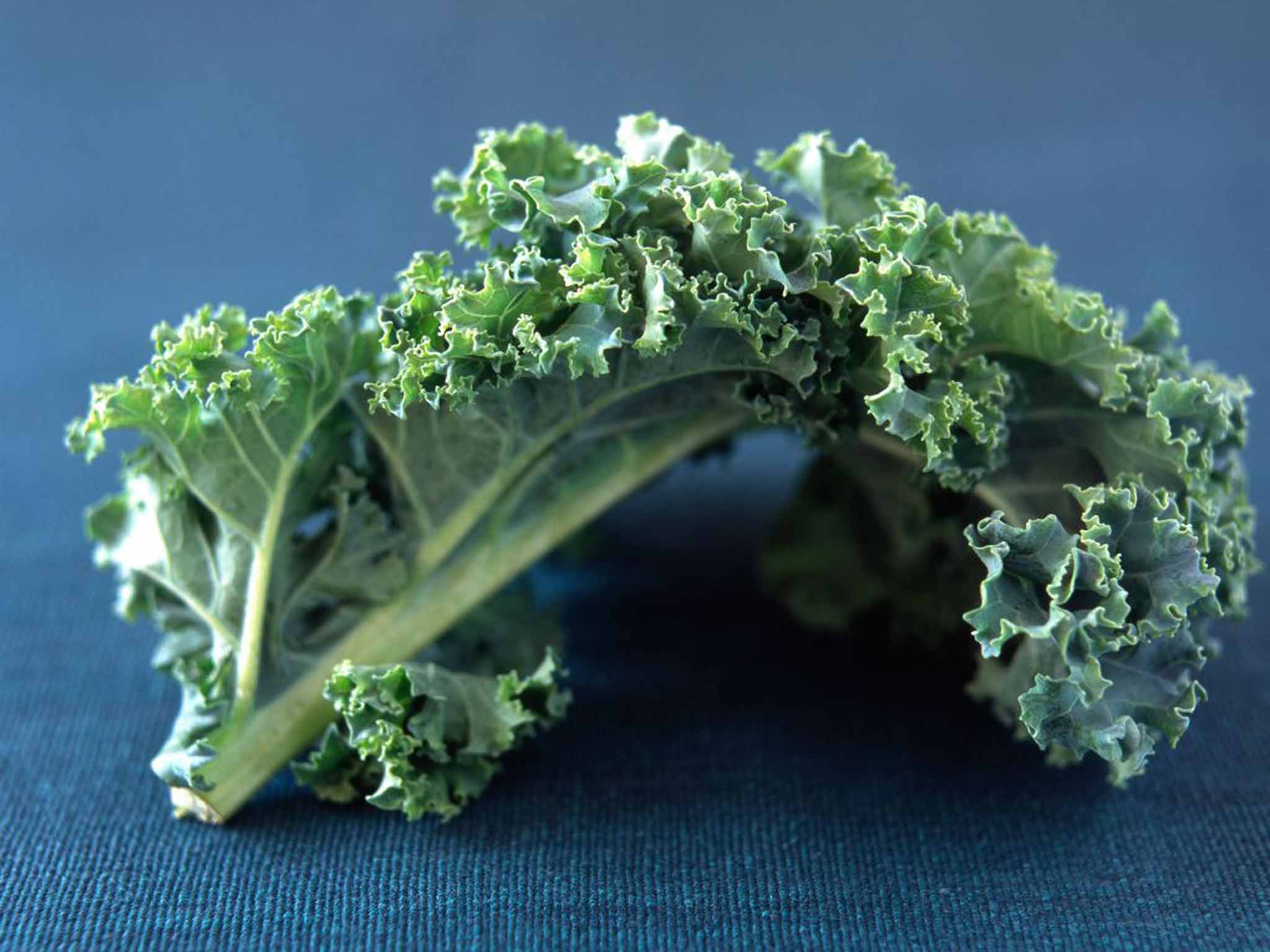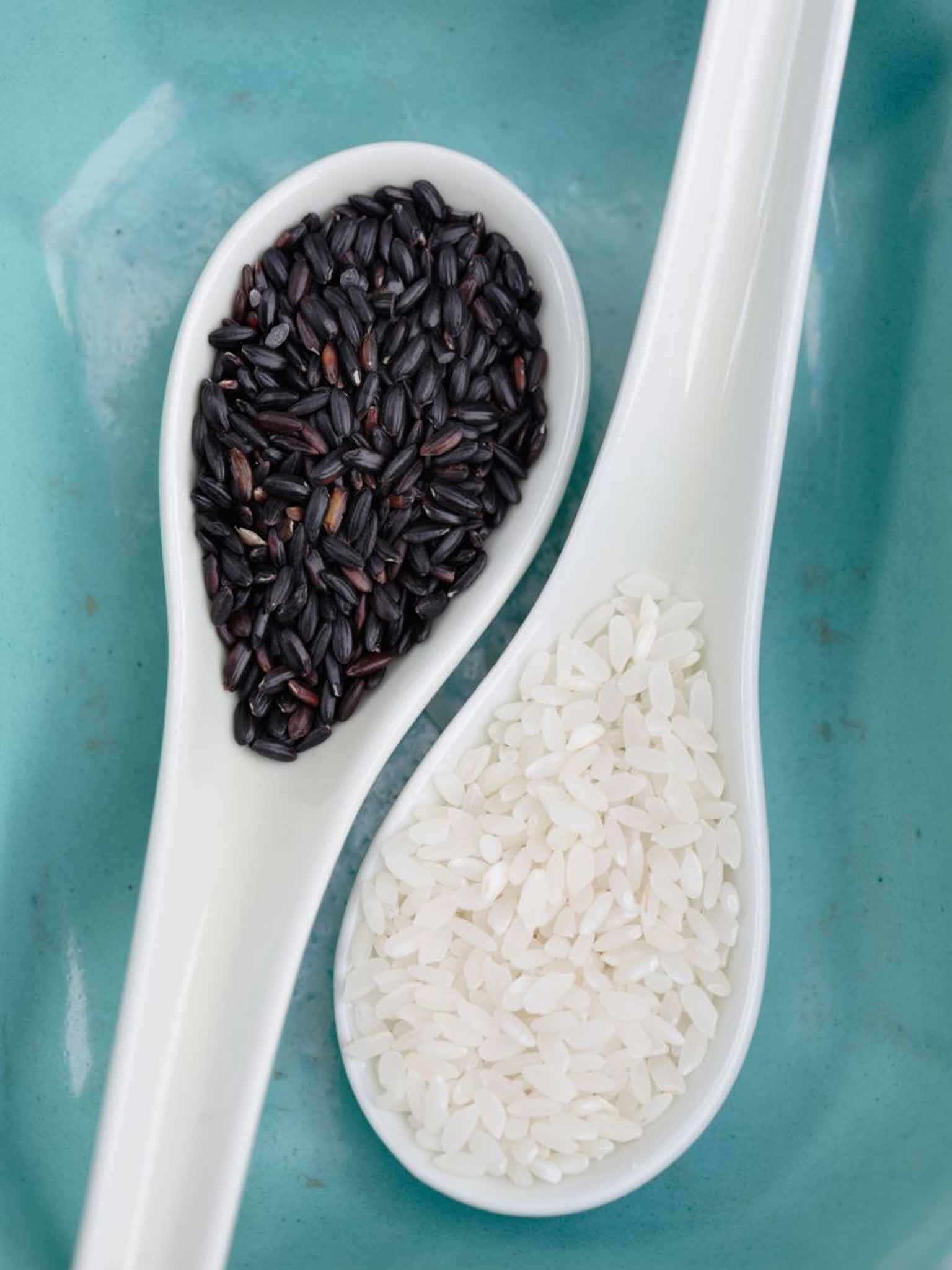Food fads: Let them eat kale
Marketing plays a huge role in determining the popularity of everything from croissant-doughnut hybrids to bitter vegetables. Alice-Azania Jarvis looks at how the tastemaker industry is responsible for what’s on our plates

Your support helps us to tell the story
From reproductive rights to climate change to Big Tech, The Independent is on the ground when the story is developing. Whether it's investigating the financials of Elon Musk's pro-Trump PAC or producing our latest documentary, 'The A Word', which shines a light on the American women fighting for reproductive rights, we know how important it is to parse out the facts from the messaging.
At such a critical moment in US history, we need reporters on the ground. Your donation allows us to keep sending journalists to speak to both sides of the story.
The Independent is trusted by Americans across the entire political spectrum. And unlike many other quality news outlets, we choose not to lock Americans out of our reporting and analysis with paywalls. We believe quality journalism should be available to everyone, paid for by those who can afford it.
Your support makes all the difference.Anyone who doubts the ability of a stalky, bitter brassica to capture the public consciousness, consider this: last year, 262 babies in the United States were named Kale.
The cruciferous vegetable has become an unavoidable presence on restaurant menus. It has been converted into crisps, popcorn, smoothies and cocktails.
You can buy kale hand cream, kale face scrub – even iPhone cases bearing the words “Keep Calm and Love Kale”.
There are no records of how many toddlers answer to the name “Cupcake”; christenings of “Cronuts” are unreported; and “Come here, Kimchi” has yet to echo across playgrounds
Nevertheless, all have achieved a similar ubiquity in recent years, becoming dinner party musts, restaurants staples or – in the case of the cronut – the subject of countless half-baked imitations.
We might think of taste as individual – but the way we fall for the same thing at the same time suggests it’s anything but. Why does this happen? And were do these trends come from?
“Marketing plays a tremendous role,” says the Canadian food writer David Sax, author of the new book, The Tastemakers: Why We’re Crazy for Cupcakes but Fed Up with Fondue. “Industry bodies get chefs to use an ingredient and they’ll commission studies into health benefits. Then it’s featured in the press.”

Much of Kale’s success is down to Oberon Sinclair, who runs the transatlantic creative agency My Young Auntie. Two years ago, the New York-based publicist was hired by the American Kale Association.
Exceptionally well-connected, with a background in fashion and music, she targeted New York’s coolest eateries, begging chefs to serve the little-known vegetable. Before long, it was appearing on menus at Balthazar, the Fat Radish, Babbo and Bar Pitti.
In early 2013, The New York Times hailed Kale’s “veggie chic”. “Whether at big-ticket galas or intimate dinners, the wintry vegetable has popped up at functions throughout the city,” it said. Sinclair ordered a line of sweatshirts and bags from the textile designers Prinkshop; kale‑inspired fashion was born.
If trends can be co-ordinated like this, can anything become the next craze? Would Sinclair have succeeded with turnips?
“No,” she says, firmly. She believes kale worked because it offers something tasty but wholesome at a time when diners are more health-conscious than ever.
“A good trend answers a need,” Sax says. “It’ll pick up on something in greater culture.”
The progress to ubiquity occurs when the mainstream catches on. Supermarkets and restaurants send staff on fact-finding missions to culinary hotspots – New York, Tokyo, Berlin – to see what the hip eateries are serving.
Marks & Spencer makes 20 such trips a year, as well as scouring London restaurants and paying attention to the latest diet and health advice. New products can be dreamed up as much as 18 months in advance.
“We all eat out – and not just for the day job,” Cass Suddes, one of the store’s trend hunters, says. “We’re exposed to new ideas 24/7.”
An entire industry has developed around predicting food fashions. “Retailers are investing more time and resources in keeping on top of trends,” Charles Banks, co-founder of the forecasting agency The Food People, says. “The cost of getting it wrong is high.”
He’s provided reports for most major retailers in UK, as well as restaurant chains and contract caterers. “We do everything from compiling data on menu combinations to travelling overseas – for instance, South Korea and Japan are very advanced with food technology adoption.”
Representatives from the hospitality sector congregate to discuss the Next Big Thing at conferences around the world.
In the US, the National Restaurant Association surveys 1,300 chefs annually to see what they’re cooking, using the answers to make predictions. Not all crazes can be anticipated, however. “Thanks to social media, if someone makes something delicious and people talk about it, it can spread around the world in weeks,” Sax says.
The cronut became a word-of-mouth hit after pastry chef Dominique Ansel created the croissant-doughnut hybrid last May. Aside from inviting a few friends in the media to taste it, there was no PR campaign.
But before long, queues were forming outside his New York bakery. Getting your hands on a cronut became worth boasting about on Twitter, or capturing on Instagram – much to Ansel’s bemusement. “I’m not quite sure anyone can properly explain it,” he says. “It went viral overnight.”
Since Ansel has trademarked the cronut name, imitators have made do with their own portmanteaus – droissants, crodoughs, even the Greggsnut. A year on, queues still form outside Ansel’s bakery but the frenzy is no longer what it was. Eventually, cronut-mania will pass.
The fondue is further along the trajectory. The Seventies staple has been démodé for decades. But what pushes a food from dish-of-the-day to culinary has-been?
Sax offers some interesting cultural theories for the fondue’s decline. The Sixties’ and Seventies’ communal ethos – peace, love, and a shared pot of cheese – faded. People were dining out more. And in the early years of the HIV/Aids epidemic, when the public was still largely uneducated on the realities of infection, sharing food was rejected out of fear. Other times, a trend fizzles simply because its novelty has worn off. Today’s cronut customers will still enjoy the same flaky pastry, the same sugar rush, as they would six months ago. They just won’t have the sweet sensation of being the first to do so.
As Sax puts it: “Food trends aren’t just about taste – we’re eating to entertain ourselves and be part of the zeitgeist.”
Then, of course, there are the food-fads-that-never-were. While they might have made a few fashionable appearances on menus, micro-desserts, bacon sweets and “pie pops” – pies on sticks – are among several recently vaunted crazes never to have hit the big time. Why not? “Fundamentally, those are one-hit wonders,” Sax says. “They’re quirky and cute but don’t deliver on a need. You’ll try them once, and move on.”
He’s right – though surely part of this is hard luck. After all, is a pie on a stick that much more random than a croissant-doughnut hybrid? As for what’s next on the horizon, trends forecasts in January included gluten-free dining and haute vegetarian food, both of which have taken off.
Sales of gluten-free food at British pubs and restaurants are up 22 per cent on last year; the Grain Store in London’s Kings Cross is making veg-centric dining cool. Other predicted hits – fried insects and spam chips – are faring less well.
And for 2015? Suddes says Marks and Spencer is expecting more interest in the nutty grain, freekeh – already present in three of the store’s salads.
And Sax is putting his money on black rice: “White has become a staple, but there are lots of people cultivating different strands. I think we’ll see it on high-end menus and then it’ll work its way out.”
Black rice is the new black? You heard it here first.
FOOD TRENDS HIT OR MISS?
The Fondue
Seventies food gets a bad rap – but the fondue is due for a revival. Who doesn’t like bread dipped in melted cheese? Come to think of it, vol-au-vents, sausages on sticks and olives are pretty good too…
The Panini
The lunch-to-be-seen-with in the Nineties. At its worst, two slices of just-toasted bread and some filling, its coffee-shop incarnation was a long way from the Italian original.
The Cupcake
To some, the jewel-coloured cakes of the Noughties were a symbol of sexy, independent womanhood. To others, they were infantalising, overly sweet and too small by half.
Restaurant small plates
Delightful if you know exactly how much to order and there are just two of you. A nightmare in a crowd – particularly when the chips arrive 30 minutes before everything else.
Join our commenting forum
Join thought-provoking conversations, follow other Independent readers and see their replies
Comments